The end of April always triggers an internal alarm that its time to go and look for some Yellow Wagtail on an area of local farmland. Timing the visit is important as I want to try and catch the birds just as they arrived from their migration and are still busy trying to establish the territories they will use for the few months of their annual visit to the UK. The timing is essential to try and catch these birds in 'song', which in itself is not particularly pleasing to the ear as it tends to be a series of repetitive high pitch 'peeps'.
I tend to photograph these birds from a farm track and try to catch them as they land on field side fence posts. The light direction is not ideal at this site, as it quickly swing round to side lighting, but it is the only place locally that I know that they can be reliably found. As usual an early set alarm clock is essential and on this session I arrived just as the sun was creeping upwards over the horizon. En route to the particular field that the wagtails have used consistently for several years, I was slightly distracted by some Meadow Pipits perched on some fence posts and bathed in the warm glow of the early light.
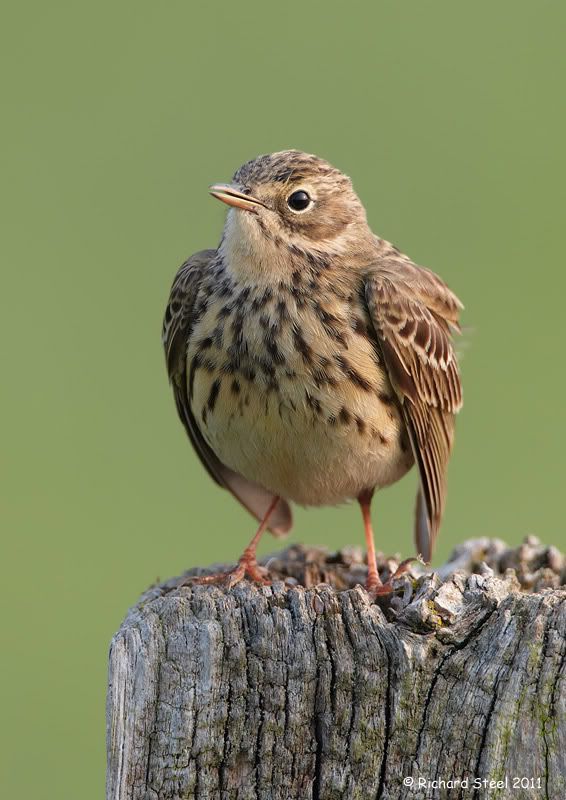

The birds were calling an occasionally launching vertically upwards in to fluttering song flight.
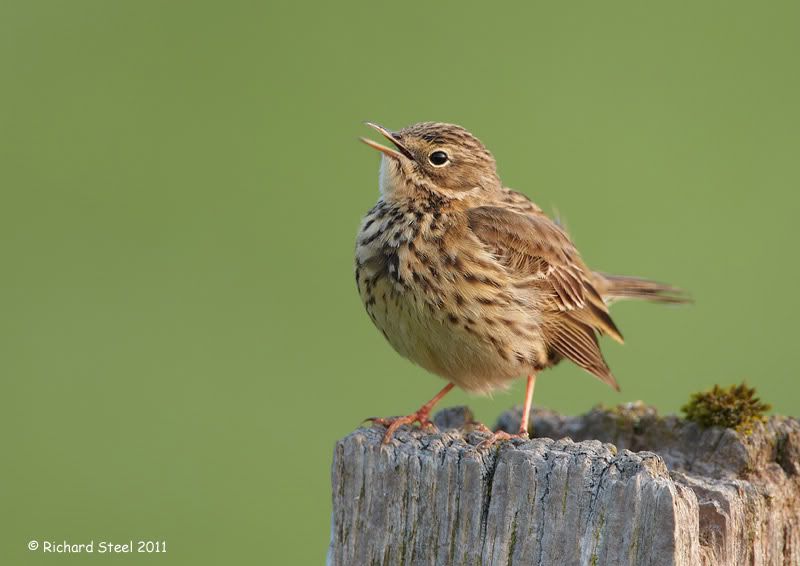
I decided to quickly move on having taken a few photographs of the Pipits, to try and find the Yellow Wagtails before the sun had arced too far round. As I arrived at the field I was greeted with a familiar call and saw a flash of yellow as male briefly flitted upwards and disappeared back in to the low crop. At least they were here and a female was the first to appear on the fence line.

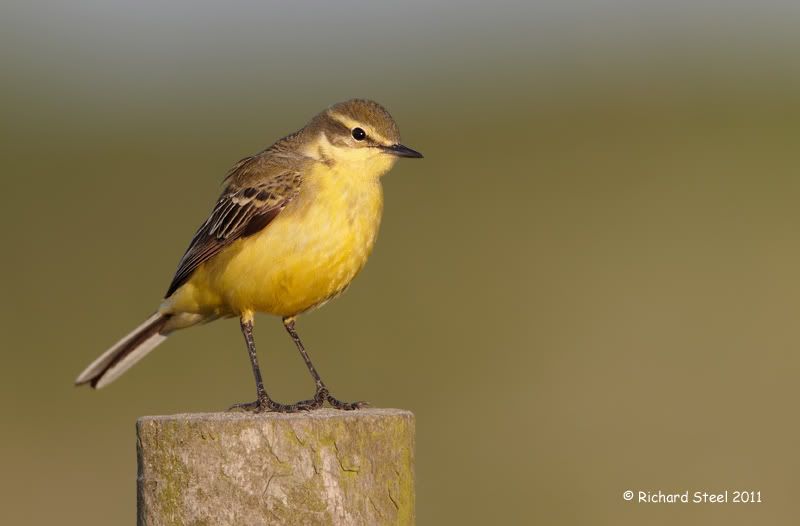
A promising start but it was really the more colourful male I was hoping to photograph and had to wait a while before one put in an appearance. There are many different races of Yellow Wagtails which are generally distinguished by having different coloured heads. Regular readers will know I encountered the grey-head race (see here) that is typical of Spain on my recent trip to Mallorca. I have encountered some of the other races on my travels but still believe the race that is unique to the UK with its light green colouration on the head and back to be the most attractive.
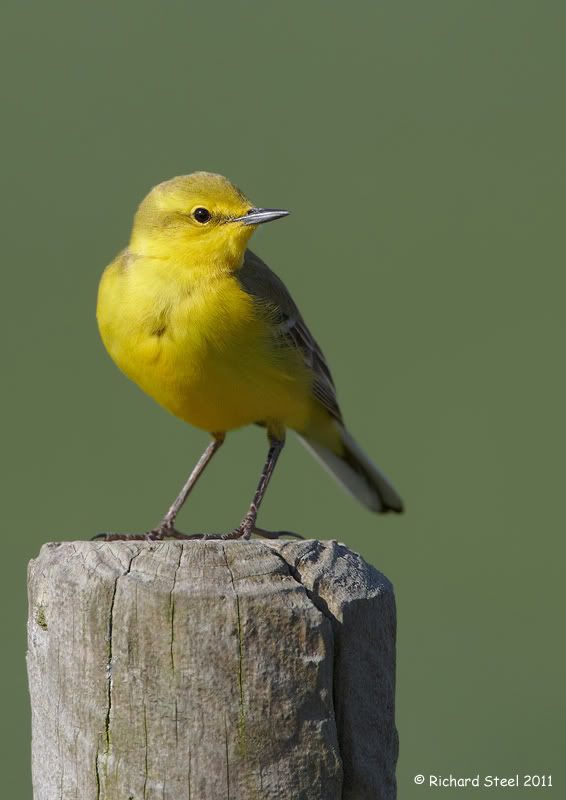

The yellow colouration of the spring male bird is incredibly bright and you would think they would be an easy target for any passing predator. However, they can be surprisingly difficult to spot even where I have seen them in areas of short grass.
A short while later another male appeared and landed on the barbed wire and started to sing, allowing me to capture a few of the photographs I was hoping to get from this pre-breakfast session.
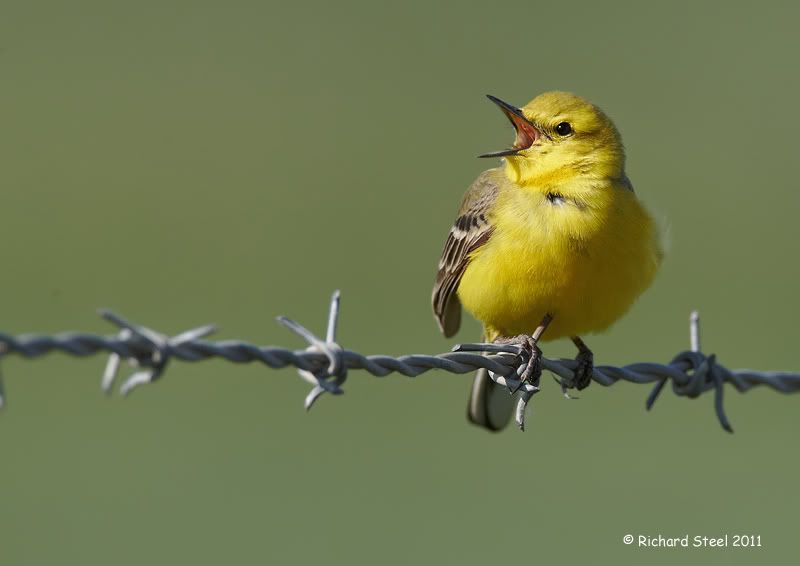
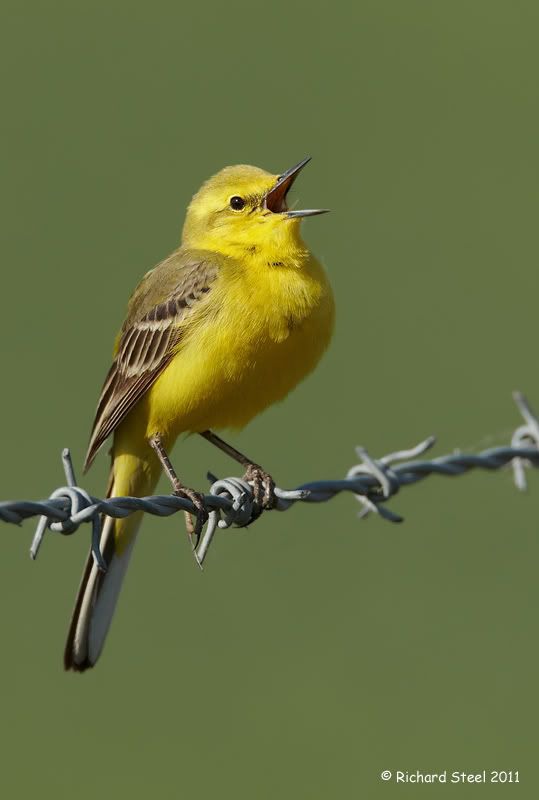













4 comments:
wow. just beautiful images.
Rich, absolutely wonderful images!
Pretty little birds, all of them!
Great stuff. I was trying to creep up on some of these at the weekend but they were to flighty and there were too many people around to sit and wait
Thanks for the replies. Farmland may seem barren if you pass it quickly but if you sit and wait it often comes to life.
Cheers
Rich
Post a Comment